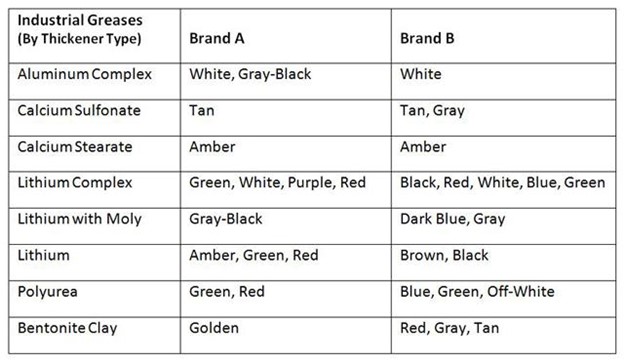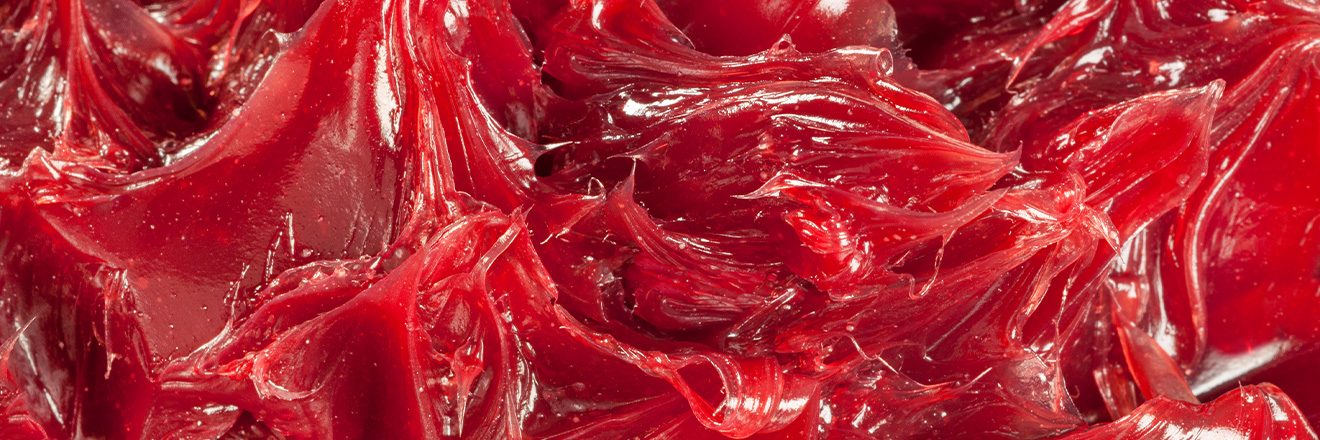Blue, red, white and even orange are just a few of the color options you might find when selecting a grease. But what do these colors indicate? Do they imply the formulation contains certain additives? Is it correlated to price or quality? The simple answer is no. Although a red grease might indicate high-temperature tolerance, a high temp grease could also be purple or white. Essentially, color can be a clue, not an identifier.
What is the Purpose of Colorants?
Grease manufacturers use colorants simply to identify greases more easily and to make them more appealing to the consumer, as opposed to just amber or black. One benefit of a grease with a distinctive color is that it can help users spot an incorrect grease if, for example, a certain color of grease emerges from a grease gun when another color of grease was expected. This can be a helpful indicator, but grease color alone should never be used to identify a grease (unless you are certain that only one grease of a certain color is used in your facility).
The table below shows how a particular grease color may refer to several different types of grease, especially among lithium-complex greases.

Photo Credit: Noria Corporation
What Grease Color Might Tell You
The color of a grease can provide some indication of its overall quality-not that blue grease is always higher quality than black grease, but if your grease that started out red begins to look darker and darker until it turns black, its color is telling you something about the grease's current quality: degraded.
This darkening, which can be more noticeable when compared to new grease, may be a sign that the grease has reached a condemning limit. Although it should not be surprising that grease darkens, the rate at which it darkens is an important factor.
Mixed Grease (May) Change Color
Besides grease darkening due to operating and environmental conditions, a shift in color could be a sign that the grease has encountered a different type of grease unintentionally. If this occurs, immediate action should be taken to determine how and why this has happened. Careless greasing with the wrong grease is more common than most people realize, and the effects of grease mixing are detrimental to machine reliability and grease performance.
A quick solution would be to use different types of fittings for various types of grease, such as normal fittings for stand-alone bearings and button-head fittings for electric motor bearings. Another option would be to leave a dollop of grease remaining on the grease fitting to indicate the appropriate color. This also protects the fitting from outside contaminants, but remember, this method should be used only when there is a single type of grease at the facility with that particular color. Grease sites can also be marked with a symbol or color that matches up with the appropriate dispensing tool. In addition, the grease type and color should also be marked clearly on the grease gun.
The Bottom Line on Grease Color
While the color of the grease may have the potential to provide quality information, it is only intended as a branding to indicate the type of grease. However, keep in mind that no grease color is guaranteed to specify a particular thickener type even within a single grease supplier or manufacturer's offerings.
